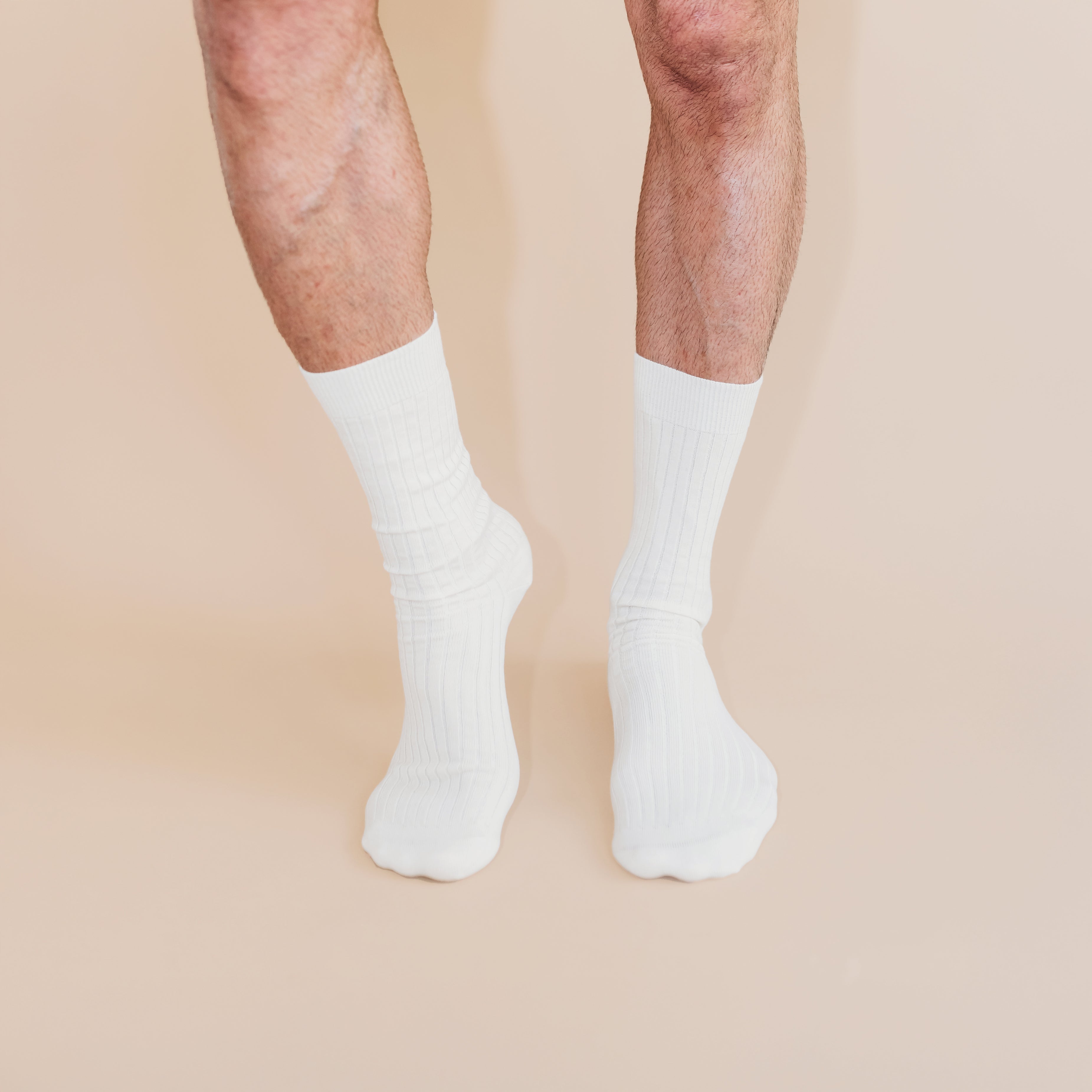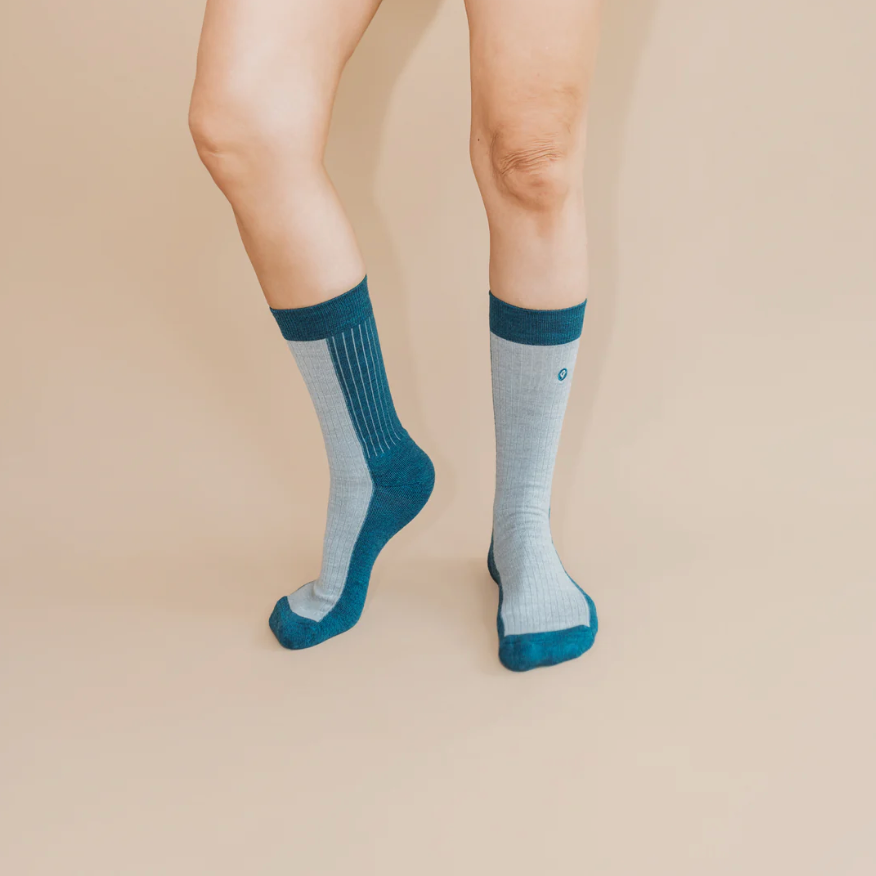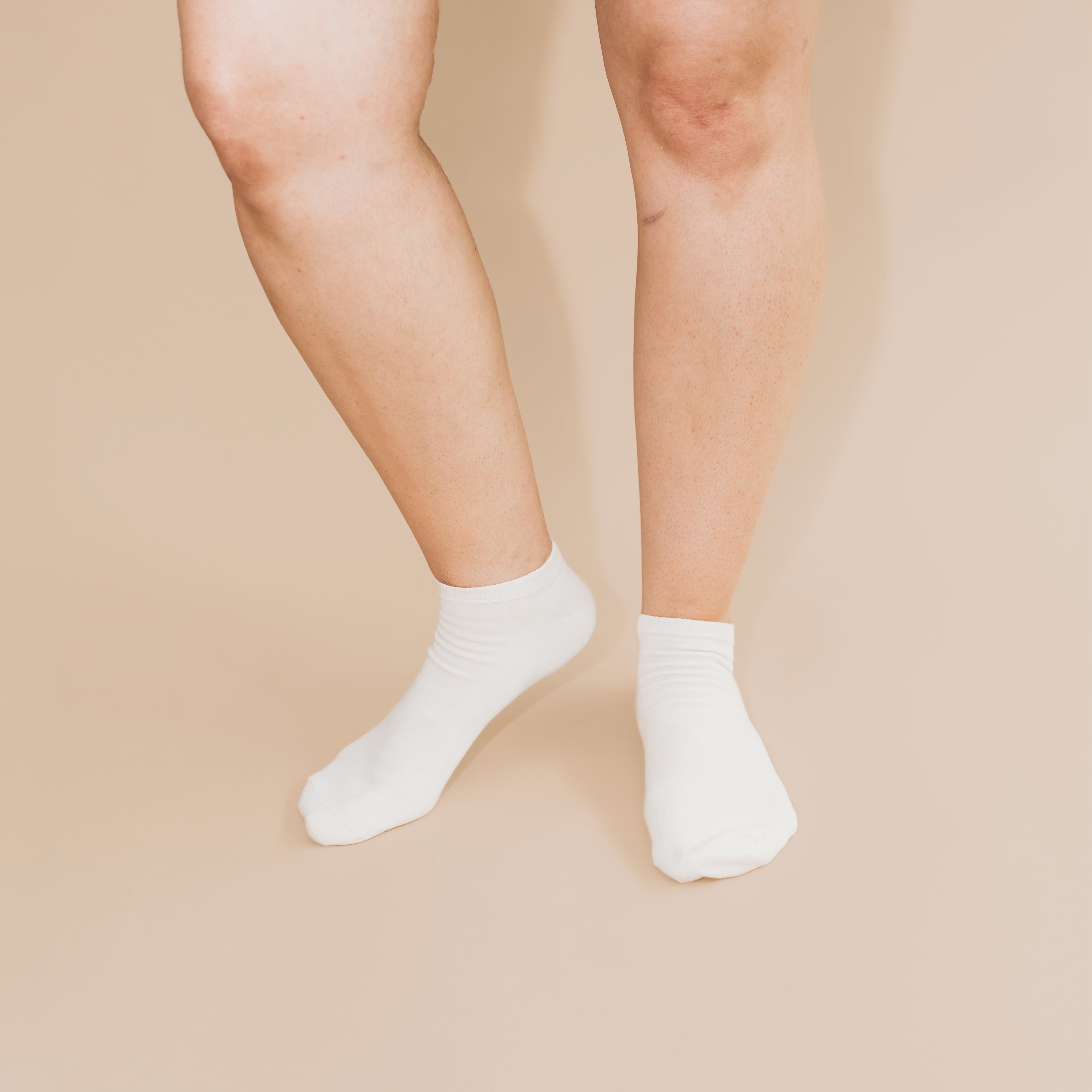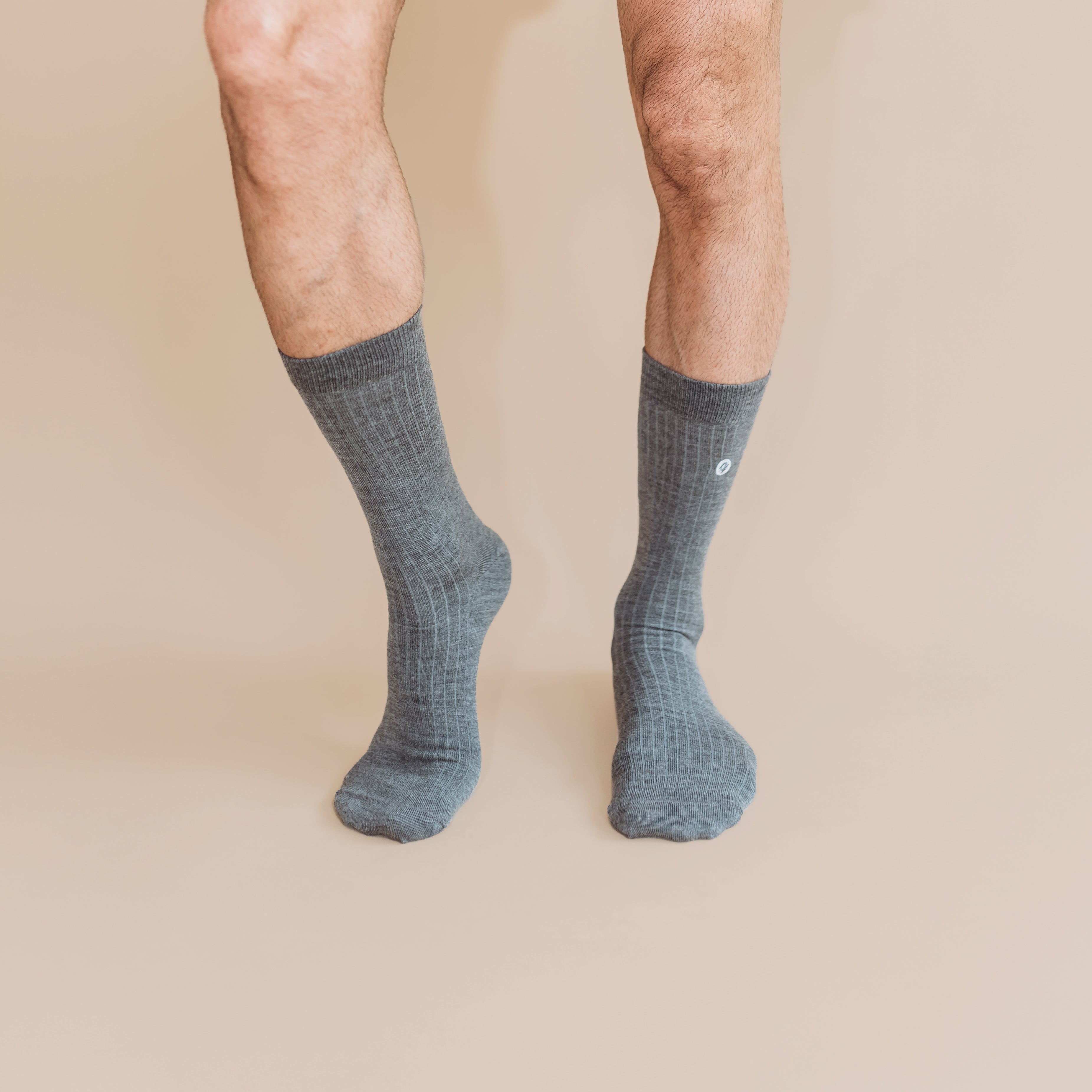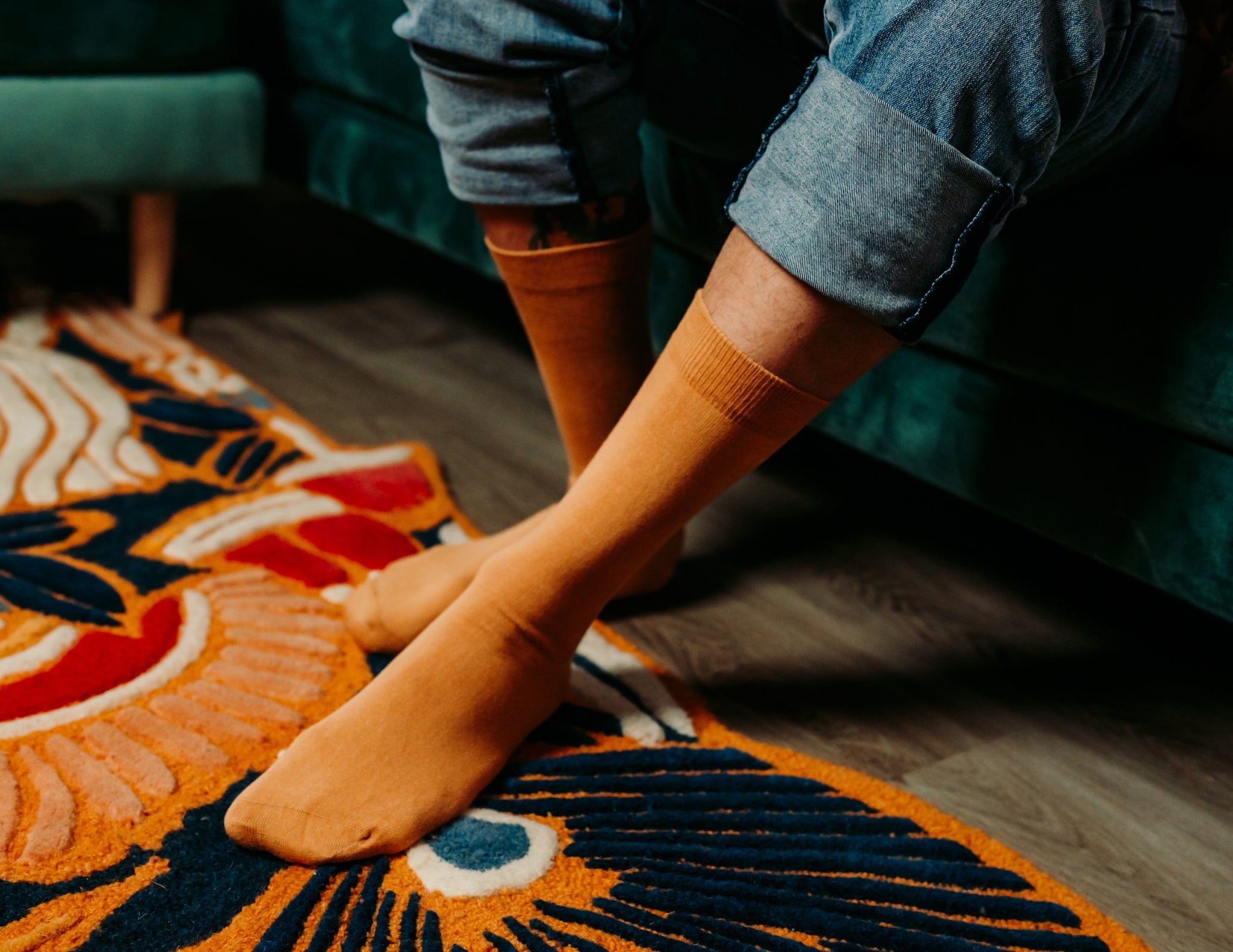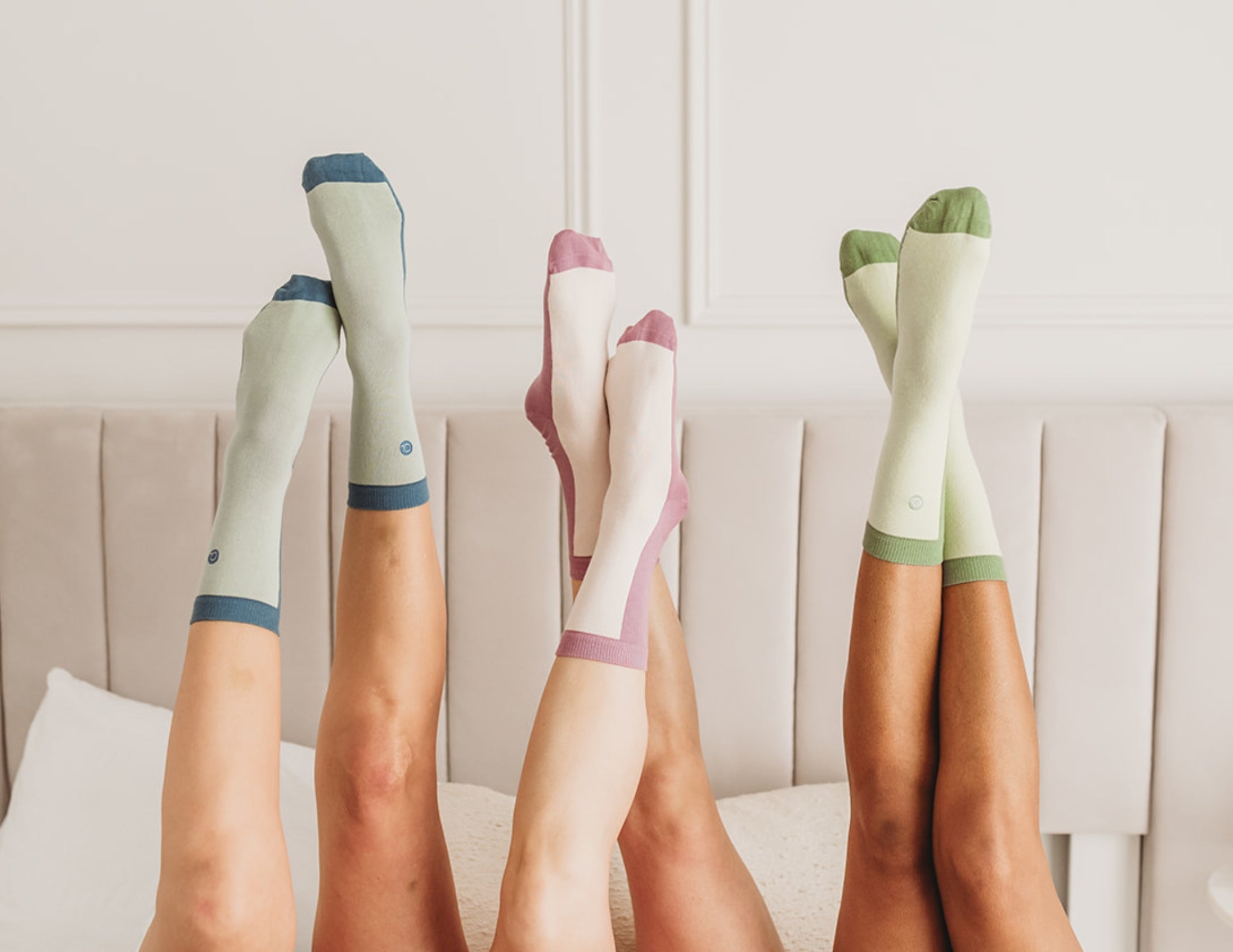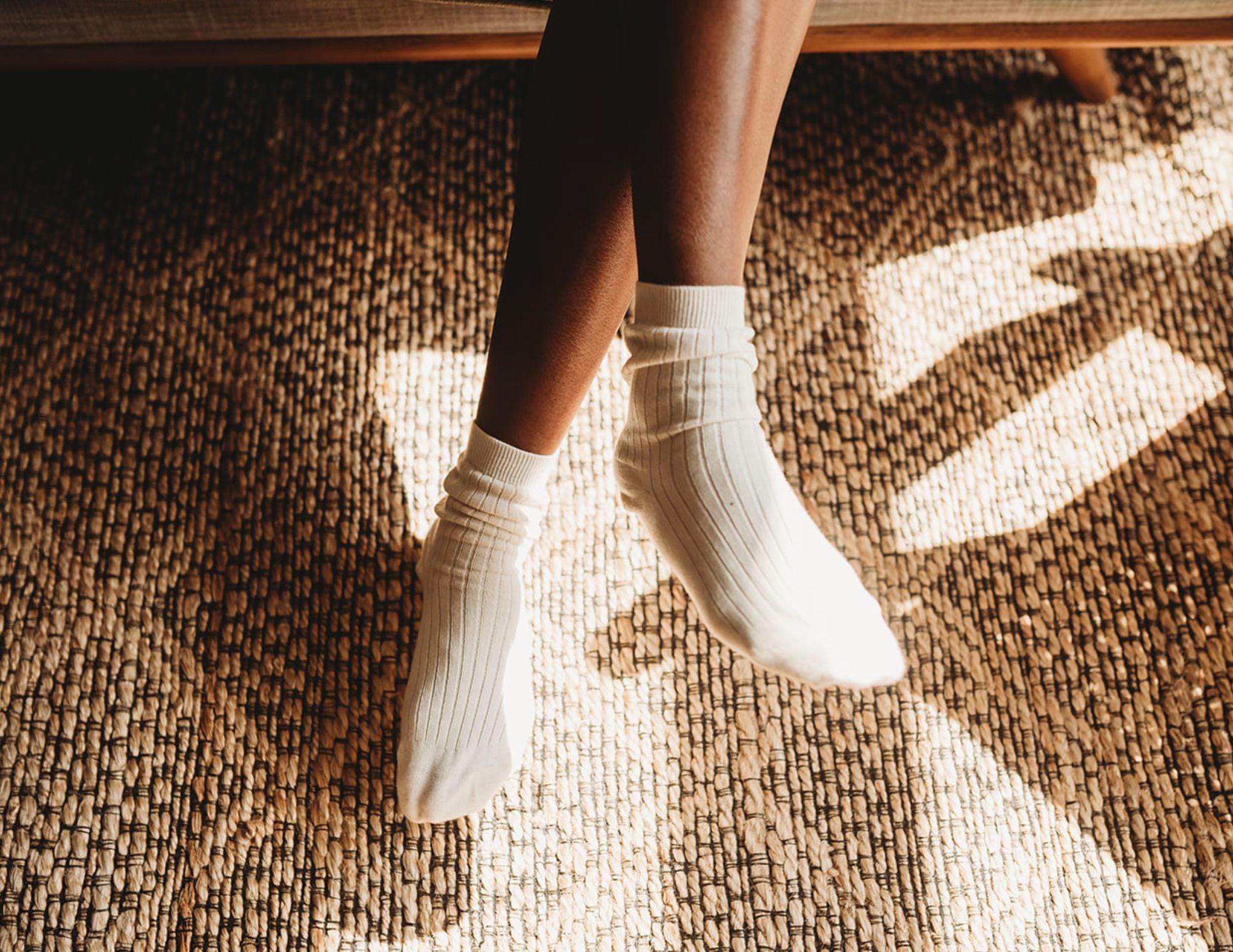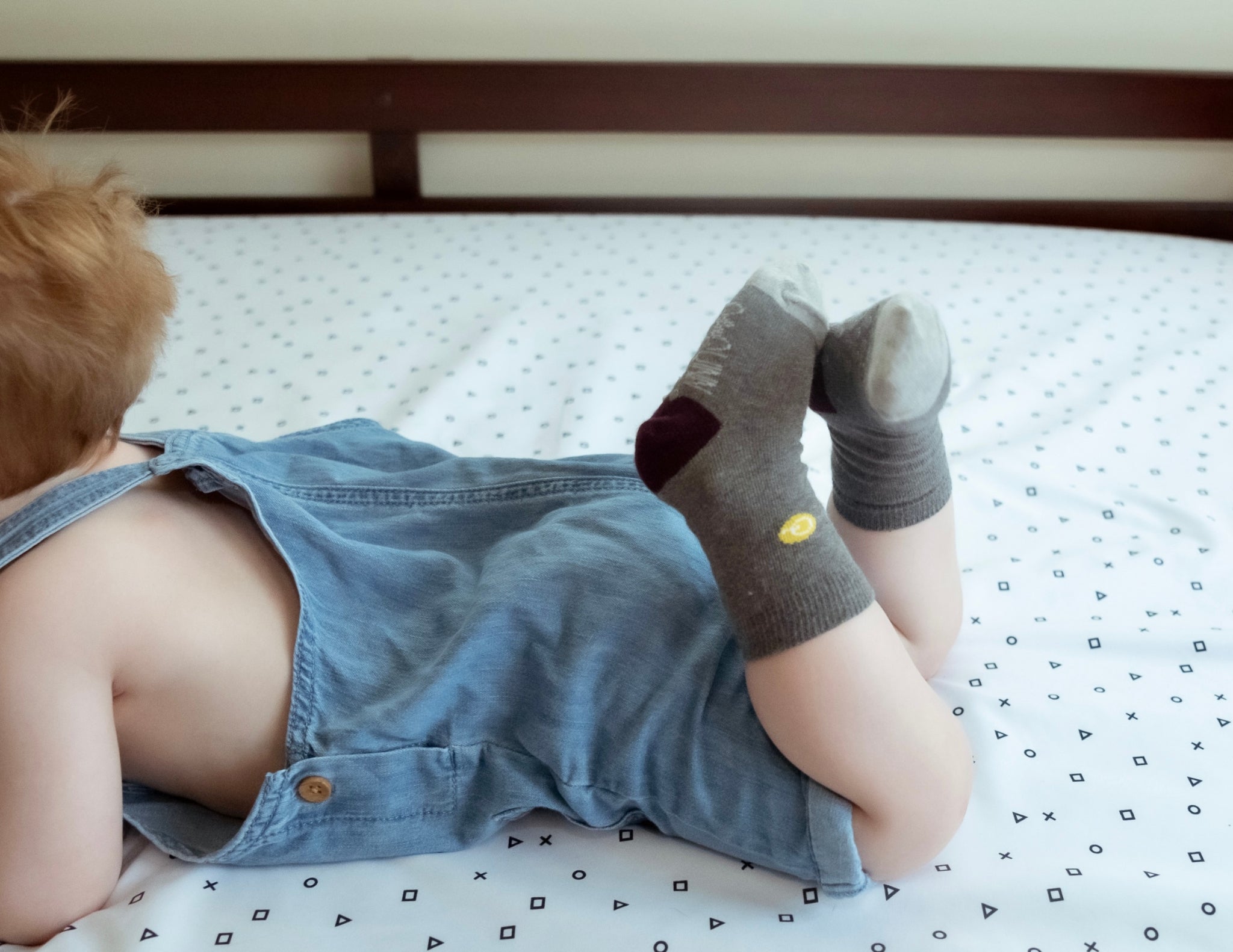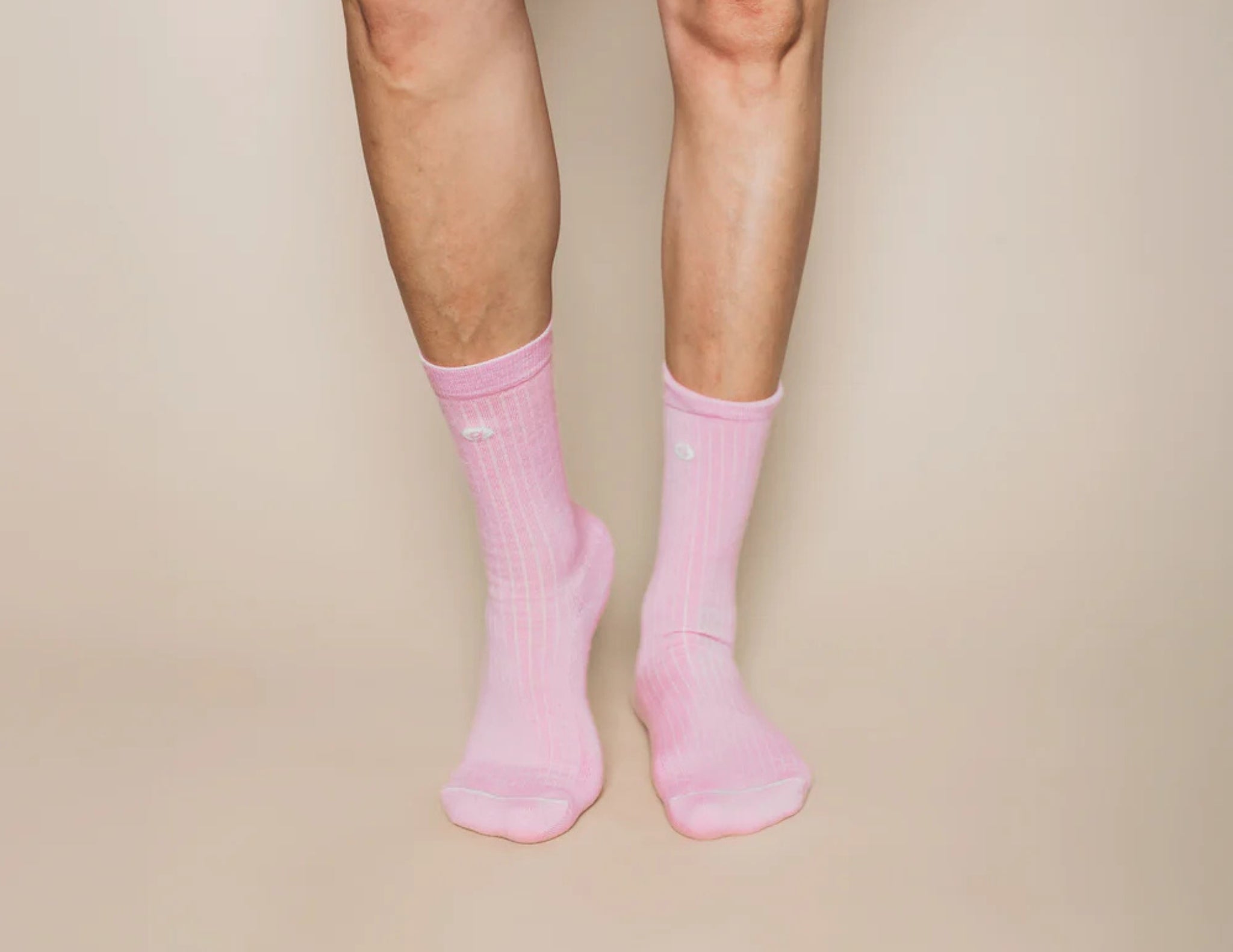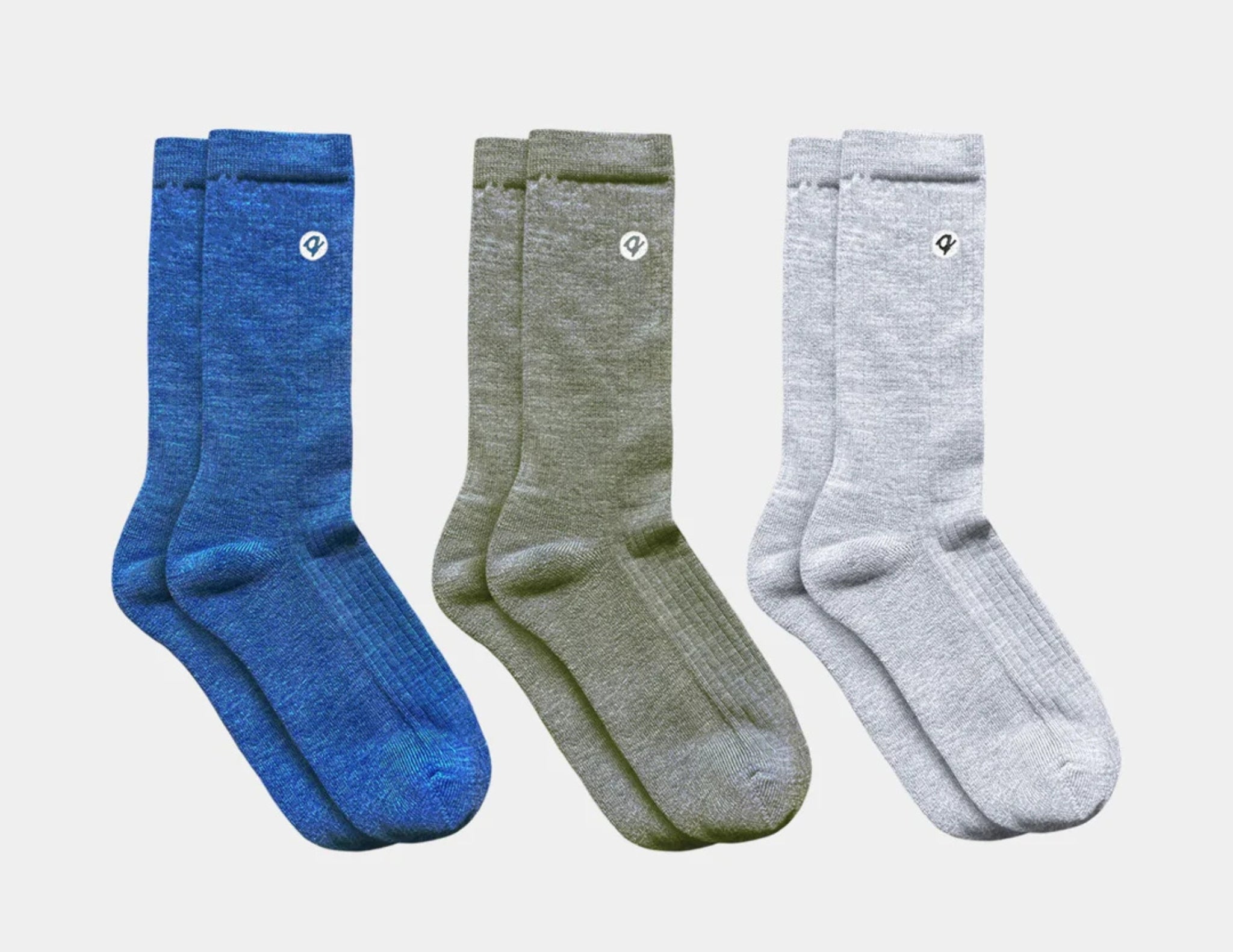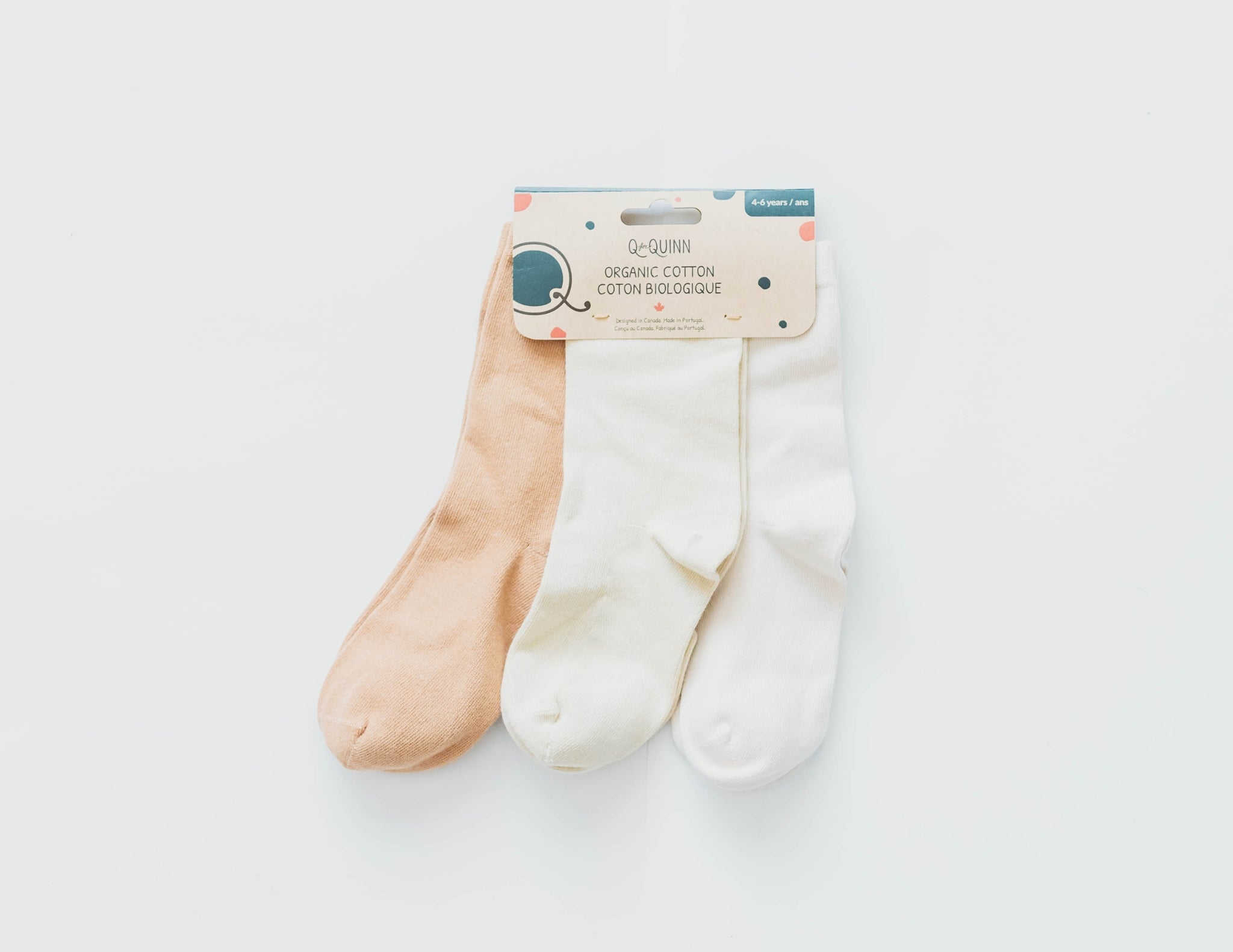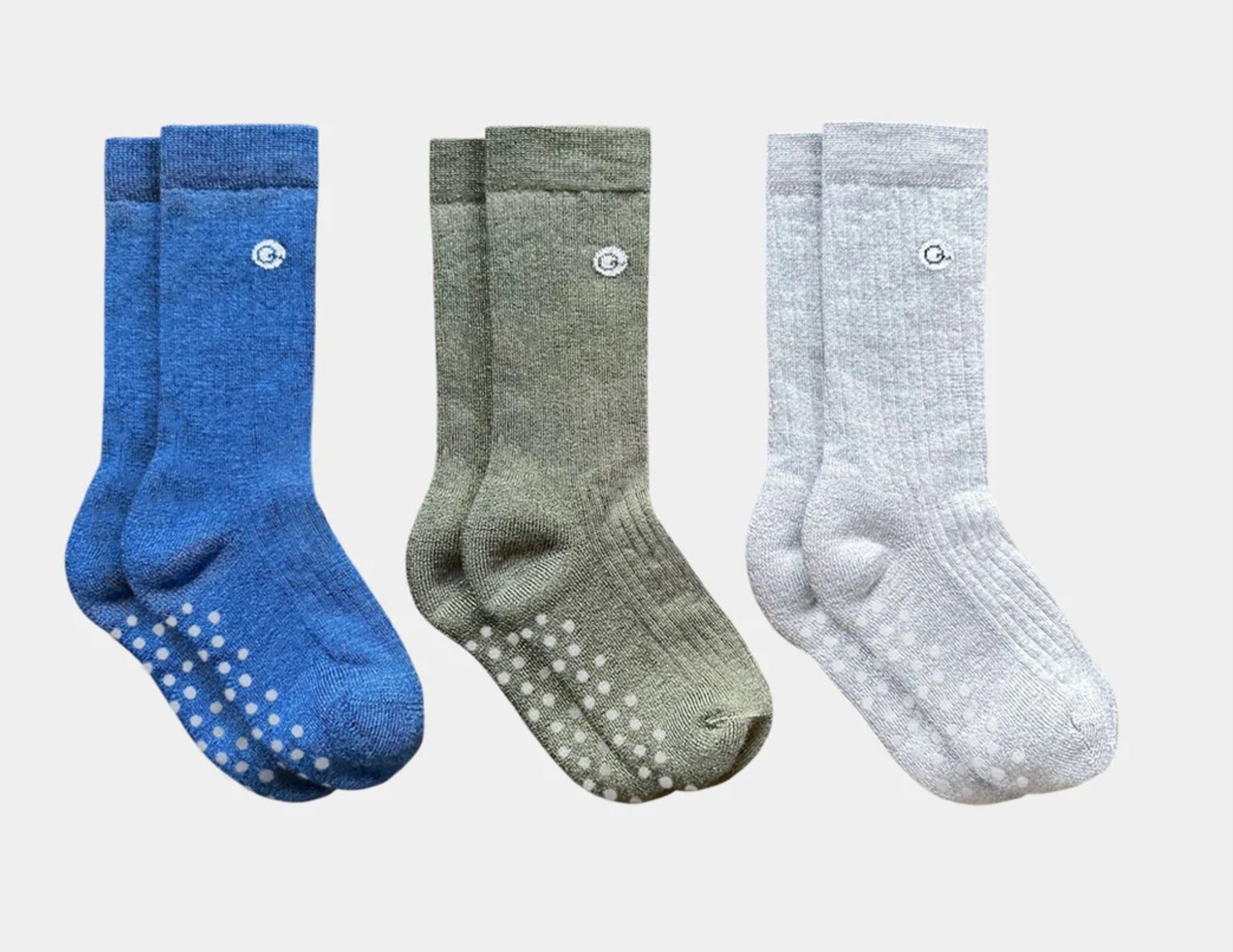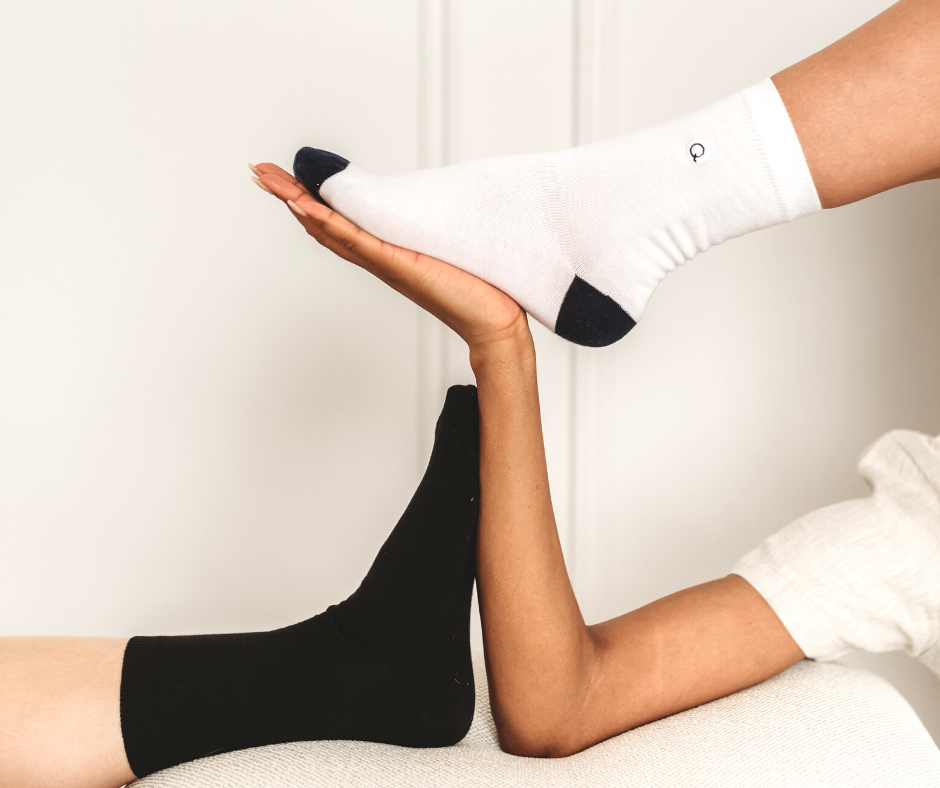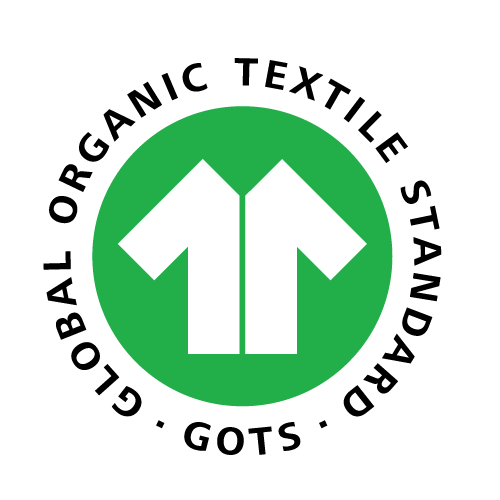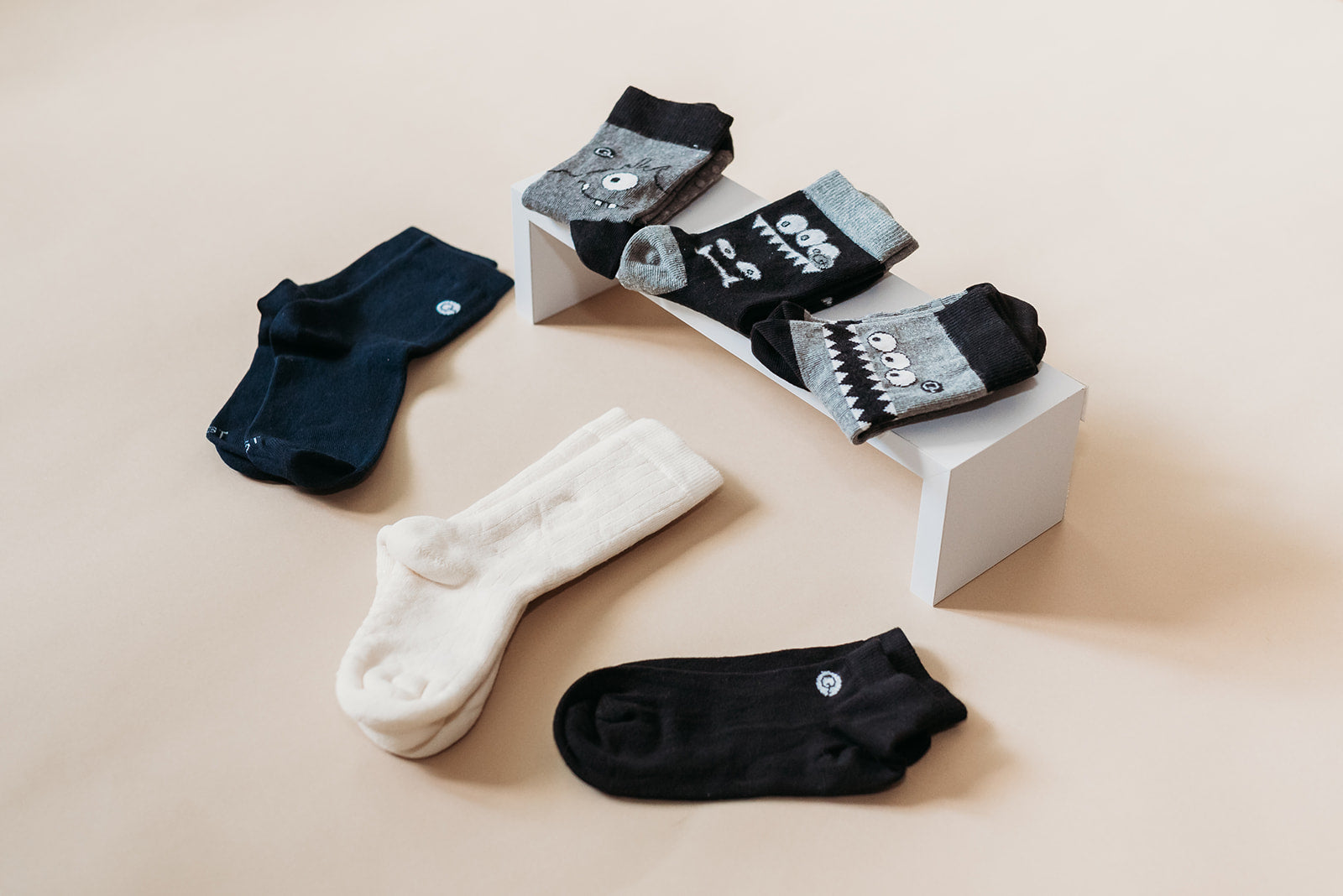
What Sock Material Is Best For Athlete's Foot? Expert Guide
Athlete’s foot is a common fungal infection that thrives in warm, damp environments – exactly the conditions often found inside sweaty shoes. Up to 70% of people will experience athlete’s foot in their lifetime, making prevention and management a real concern. One key factor in keeping foot fungus at bay is sock material. The socks you wear can either help keep your feet dry and inhospitable to fungus or create a moist breeding ground for it. In this article, we’ll explore the best sock material for athlete's foot, whether cotton socks (especially organic cotton) are good for athlete’s foot, and compare cotton with other materials like merino wool, bamboo, and synthetics. We’ll also provide expert tips on choosing the best socks and caring for your feet to prevent athlete’s foot.
Best Sock Materials for Athletes Foot
Let's dig deeper into what sock material is best for athlete’s foot? The goal is to keep your feet dry, cool, and inhospitable to fungi. This means a good sock should either wick moisture away from your skin or at least not stay wet against you. Moisture-wicking is the key feature that makes some sock materials better than others for preventing athlete’s foot. These fabrics work by pulling sweat away from your skin and moving it to the outer surface of the sock, where it can evaporate. Materials like merino wool is excellent at this. In contrast, purely absorbent materials like cotton soak up sweat but don’t dry quickly—leaving your feet in a damp, warm environment where fungus thrives. The best athlete’s foot socks are those that both remove moisture and dry fast, helping keep your feet cool and fungus-free. Here are some of the top materials and why they help:
Merino Wool
Merino wool is often considered one of the best sock materials to prevent athlete’s foot. Unlike the scratchy wool socks of the past, merino wool is a soft, fine fiber that can be worn year-round. Its secret weapon is its unique fiber structure: Merino wool can absorb up to 30% of its weight in moisture without feeling wet. The wool fiber pulls sweat into its core (which is hydrophilic), but the surface of the fiber remains dry and even repels moisture. This means your feet stay drier, and even if the sock has absorbed some sweat, it won’t feel soaked. Merino also allows good airflow and helps regulate temperature – keeping feet warm in winter and cool in summer.
Not only does merino wool manage moisture well, but it also has natural antifungal/antibacterial properties. Merino contains lanolin, a natural wax, which gives the fiber mild antibacterial and antifungal effects.. This can help reduce odor-causing bacteria and make the sock less hospitable to fungus. Many hikers and athletes find that wool socks don’t smell as bad as synthetic socks after a long day, which is a sign that fewer bacteria are thriving there. In terms of preventing athlete’s foot, merino wool’s ability to stay dry and resist microbes is a winning combination. Several foot experts note that merino wool socks are top performers for sweaty or fungus-prone feet. The only caveat is that pure wool socks can be pricey, but they’re durable and often worth the investment for healthy feet.
Bamboo Fiber
Bamboo socks have gained popularity as a natural option that’s gentle on the skin. Bamboo fiber, which is usually a form of rayon made from bamboo pulp, is highly regarded for its moisture-wicking and breathability. Bamboo can absorb and evaporate sweat quickly, keeping feet drier than cotton can. The fibers are often described as hollow or porous, which allows them to pull moisture away from the foot and release it. If you suffer from sweaty feet, bamboo socks can help keep that sweat from pooling on your skin.
However, the strength of bamboo’s antifungal effect can depend on how the fabric is processed. Even without relying on that, bamboo socks are very soft (great for sensitive, cracked skin), naturally breathable, and help regulate foot temperature. They’re a solid choice for an “athlete’s foot sock” because they aim to keep the environment cool, dry, and comfortable.
Cotton
Cotton is a widely used sock material, but when it comes to athlete’s foot, it’s generally not the top choice. Cotton is highly absorbent – it will soak up sweat readily – but it also holds onto that moisture rather than wicking it away. A cotton sock tends to stay wet once it gets wet, especially if you’re active. This means your foot is surrounded by damp fabric, creating a warm, humid microclimate where fungus can thrive. In fact, medical experts often advise against 100% cotton socks if you’re trying to prevent athlete’s foot or have very sweaty feet. As one podiatry clinic put it, cotton “traps moisture and creates the perfect breeding ground for odor-causing bacteria” (and by extension, fungus). The breathability of cotton (it does allow air to circulate) is outweighed by the fact that it doesn’t actively pull moisture away from the skin.
Even organic cotton socks, which are free of harsh chemicals and dyes, have the same fundamental issue: the cotton fiber itself still holds water. So, while organic cotton might be gentler for those with allergies or sensitive skin, it doesn’t inherently prevent the dampness that encourages athlete’s foot. If you do wear cotton socks, use them in low-sweat situations or be prepared to change them frequently as soon as they become damp. Some athletic socks use cotton blends or a cotton weave that’s thinner or combined with moisture-wicking fibers, which can improve drying time. In general, though, purely cotton socks (especially thick ones) are best avoided for long wear if you’re prone to foot fungus. Instead, opt for wool or synthetic blends that will keep your feet drier.
Why Merino Wool Wins
With several sock material options available, merino wool often comes out on top as the best overall choice for preventing athlete’s foot. Here’s why: Merino wool checks all the boxes. Like synthetic fabrics, it wicks moisture efficiently – but unlike many synthetics, it can absorb a lot of sweat internally without feeling wet on the surface, and it gradually evaporates that moisture. Your foot stays drier for longer, whereas a purely synthetic sock might not hold moisture against the foot but could leave it sitting on your skin until it diffuses out. More importantly, merino has natural anti-odor and antimicrobial advantages that most synthetic fibers lack. Synthetic socks (made of polyester, nylon, etc.) dry quickly and are quite good at moving moisture, but they don’t inherently stop bacteria or fungus – which is why they can get smelly and require frequent washing. Merino, on the other hand, actively inhibits bacterial growth, so odors are minimized and the fungal organisms have a harder time multiplying.
Compared to bamboo, merino wool’s antimicrobial effect is reliably present (lanolin is part of the fiber), whereas bamboo’s requires specific processing to retain the bamboo kun. Both merino and bamboo are breathable and regulate temperature well, but merino arguably manages moisture in a more complex way (absorbing vapor and even releasing a bit of heat as it dries). In practice, you’ll find dedicated hikers, runners, and podiatrists frequently recommending merino wool socks for foot conditions. They’re praised for keeping feet dry and healthy even during intense activities. One clinical insight: if your footwear is extremely airtight (like waterproof boots that don’t let sweat escape), a wool sock’s ability to absorb moisture can actually keep your feet feeling less wet than a purely wicking synthetic sock would. Overall, merino wool offers the best balance of moisture control and fungus prevention. It’s no coincidence that foot care experts often list wool or wool-blend socks as a top recommendation for athletes and those prone to athlete’s foot.
That said, other materials can certainly work: high-tech synthetic socks can keep feet dry (just be diligent about washing them and perhaps using foot powder to control odor), and bamboo socks provide a nice mix of moisture-wicking and softness. The key is avoiding fabrics that stay wet. And in that contest, merino wool is the clear winner for most people.
Cotton Socks and Athletes Foot: Pros and Cons
Cotton is a natural fiber that many of us wear daily. When it comes to athlete’s foot, cotton socks have some pros but also significant cons to consider:
- Breathability and Comfort: Cotton fabric is breathable and feels soft on the skin. Organic cotton in particular, is grown without harsh chemicals, making it hypoallergenic and gentle for those with sensitive skin. If your feet are irritated or you have cracked skin from athlete’s foot, organic cotton socks can be soothing and free of chemical dyes or finishes that might further irritate your skin. They are also widely available and affordable.
- Moisture Absorption: Cotton can absorb a lot of moisture, which initially seems good for sweaty feet. In fact, cotton fibers do soak up sweat, pulling it away from your skin.This is why cotton socks have long been recommended to help keep feet dry. However, this benefit comes with a downside – cotton retains that moisture. Once the cotton fabric gets wet, it tends to stay damp and dry slowly. The sock holding sweat against your skin creates the kind of damp environment in which athlete’s foot fungus thrives. As one foot health expert puts it, cotton “once wet holds moisture directly against your skin,” whereas moisture-wicking materials actively move sweat off the skin. In other words, a soaked cotton sock can turn your shoe into a humid incubator for fungus.
- Changing Socks Frequently: Because cotton gets wet and stays wet, it only helps if you change your socks frequently. If you wear cotton socks, you should swap them out for a fresh pair as soon as they become damp – for example, after exercise or midway through the day if your feet sweat a lot. Putting on clean, dry cotton socks will remove the accumulated moisture and give your feet a chance to stay drier. If you’re willing to change your socks two or three times a day, cotton could work. But not everyone can do that consistently.
- Organic vs. Regular Cotton: The advantage of organic cotton is what it doesn’t have: no synthetic pesticides or harsh chemical residues. This makes organic cotton socks a safer choice if you have allergies or sensitive skin. Also, many organic cotton socks are unbleached and undyed or use natural dyes. Some podiatrists note that brightly dyed cotton socks could contain chemicals that irritate the skin and potentially increase the risk of infection. By choosing organic or dye-free cotton socks, you avoid those chemical irritants. Still, you must keep them dry through frequent changes.
For more expert insights on feet health, sock care, materials, and styles, explore these helpful guides:
Tips for Choosing Socks and Preventing Athletes Foot
Choosing the right sock material is crucial, but it’s only part of the solution. To truly keep athlete’s foot away or help it heal, you should also practice good foot care and hygiene. Here are some practical tips from experts:
- Keep Feet Clean and Dry: Wash your feet daily with soap and water, and dry them thoroughly, especially between the toes. Fungus can linger on skin flakes, so good hygiene helps. After washing, ensure no dampness remains between toes (you can use a clean towel or even a hair dryer on a cool setting). Dry = hostile environment for fungus.
- Wear Clean, Breathable Socks (and Change Them Often): Put on a fresh pair of socks every day, and more often if your feet get sweaty. As soon as socks feel damp, change into dry ones. During heavy activity or sports, have an extra pair of socks to swap midway. This prevents sweat from accumulating. Also, choose lightweight, breathable socks that allow air circulation whether it’s moisture-wicking wool, bamboo, or even cotton. Thinner or mesh-knit socks dry faster than thick, poorly ventilated ones.
- Use Antifungal Powder or Foot Powder: Sprinkling an antifungal foot powder (or even plain talcum powder) on your feet and inside your socks can help keep the skin dry by absorbing excess moisture. Some powders also contain antifungal medication. This is especially useful if you know you’ll be wearing closed shoes for long hours.
- Wear Breathable Shoes and Rotate Them: Your shoes matter as much as your socks. Wear light, well-ventilated shoes that allow moisture to escape. Avoid wearing the same pair of shoes two days in a row – let each pair dry out for at least 24 hours. If your shoes are damp at the end of the day, take out the insoles to air them, or stuff the shoes with newspaper to speed drying. Likewise, avoid rubber or non-breathable shoes (like vinyl) for long periods, as they trap sweat. Whenever possible, wear sandals or flip-flops to let your feet air out, or go barefoot at home to give your feet breathing time (just be sure to keep floors clean to avoid spreading fungus).
- Put Socks on Before Underwear: Here’s an unexpected tip – if you currently have athlete’s foot, put your socks on before your underwear when getting dressed. The fungus that causes athlete’s foot can spread to the groin (where it’s known as jock itch) via contaminated hands or clothing. By putting on socks first, you reduce the chance of any fungal spores on your feet transferring to your underwear and groin area. It might sound funny, but it’s a proven preventative step.
- Wash Socks (and Towels) in Hot Water: To kill fungus spores, wash your socks in hot water (at least 60°C/140°F if the fabric allows) or use a laundry sanitizer. Both Cleveland Clinic and WebMD recommend hot-washing socks, towels, and bedding to destroy any fungi and prevent re-infection. Also, don’t share socks or towels with others, to avoid spreading the fungus.
- Don’t Forget Treatment: If you already have athlete’s foot, socks alone won’t cure it. Use an over-the-counter antifungal cream or spray as directed, and continue treatment for as long as recommended even if symptoms fade. Keeping feet dry will support the treatment and help it work faster, but medication is often needed to fully eliminate the fungus.
By following these tips – wearing the right socks, keeping up with foot hygiene, and giving your feet a dry, breathable environment – you’ll significantly reduce the risk of athlete’s foot or help ensure it doesn’t come back.
Common Questions on Socks and Athletes Foot
What sock material is best for athlete’s foot?
The best sock materials for athlete’s foot are ones that keep your feet dry and cool. Merino wool is the top choice because it can absorb lots of moisture without feeling wet and even has a bit of natural antifungal property. Bamboo fiber is another great option – it’s very absorbent yet wicks moisture away and is breathable, helping sweat evaporate. Ultimately, any sock that is labeled “moisture-wicking sock” and breathable is ideal. Some socks even combine merino wool with synthetic fibers to get the benefits of both. On the other hand, 100% organic cotton socks are not the best for athlete’s foot since they stay wet (unless you change socks constantly). So, look for keywords like merino, bamboo, coolmax, or wicking on the sock label for the best results.
Is merino wool better than cotton for athlete’s foot?
Yes. Merino wool is generally considered superior to cotton for preventing athlete’s foot. The reason comes down to moisture control. Merino wool can keep your feet dry by both wicking and absorbing moisture without feeling wet, whereas cotton just absorbs and then stays wet. Imagine you step in a puddle or your feet sweat a lot – a cotton sock will be soggy until you change it, but a merino wool sock might feel only slightly damp or even dry to the touch because the moisture gets trapped inside the wool fibers away from your skin. Moreover, merino wool has that natural antifungal/antibacterial advantage due to lanolin, meaning it is less likely to harbor odor and fungus. Cotton doesn’t fight microbes at all. Many hikers with sweaty feet or people prone to athlete’s foot report far fewer problems when switching from cotton socks to merino wool socks. The only potential downside is cost – merino socks are pricier – but they are durable and offer great foot health benefits. So if preventing athlete’s foot is a priority, merino wool is worth it.
What should I look for in a sock for athlete’s foot?
When shopping for an “athlete’s foot sock,” look for these features: moisture-wicking material, breathability, and comfort fit. Moisture-wicking is non-negotiable – check the label for fabrics like merino wool, bamboo, polyester/coolmax, or other technical fibers that mention sweat management. Breathability is also crucial: a good sock will have ventilation panels or a mesh weave on the top of the foot, or use fibers that allow air flow (natural fibers like wool and bamboo are good for this). This helps sweat evaporate and keeps feet from overheating. Additionally, a sock for athlete’s foot should not be too tight or thick. A lighter sock that fits well will prevent bunching and friction. Seamless or smooth-toe designs are a plus, since thick seams can rub and create small breaks in the skin where fungus can enter. You might also consider socks with antimicrobial additives (like copper or silver ions), which are marketed to inhibit fungus – these can provide extra peace of mind, though keeping the sock dry is the primary goal. In short, choose a sock that advertises dryness and comfort: those are the socks that help most in preventing athlete’s foot.
Can wearing the right socks really prevent athlete’s foot?
Wearing the right socks is a big help in preventing athlete’s foot, but it works best combined with other good habits. The right socks (dry, moisture-wicking, breathable) create an environment where it’s hard for fungus to grow. If your feet are consistently dry and cool, athlete’s foot is far less likely to take hold. Many people find that simply switching from always wearing cotton socks to wearing wool or synthetic athletic socks dramatically cuts down on foot fungus and even foot odor. However, socks alone won’t guarantee you never get athlete’s foot. You should also keep your feet clean, rotate your shoes, and wear shower sandals in communal areas where fungi lurk. Think of it this way: socks are your first line of defense – they either keep your feet dry or they don’t. Good socks will make a big difference, but for best results, use them as part of an overall foot care routine. If you already have a mild athlete’s foot infection, wearing clean, dry socks can help contain it and prevent spreading, while you treat it. Just remember to launder those socks in hot water to kill any fungus. So yes, the right socks can prevent athlete’s foot (or its recurrence) to a significant extent by removing the moisture fungus needs to thrive.
Q for Quinn’s Organic Cotton and Merino Wool Socks
As an example of supportive sock design, Q for Quinn offers socks made from organic cotton and merino wool. We offer a range of organic and ethically made socks—including 100% organic cotton socks, merino wool socks, moisture-wicking socks, and eczema socks—that are gentle, chemical-free, and suitable for sensitive skin. Our merino wool socks are especially helpful for managing moisture and regulating temperature. In fact, Q for Quinn notes that their Merino wool products “naturally regulate body temperature and keep your feet comfortable.” Merino wool’s natural oils (lanolin) give it antibacterial and antifungal benefits. Together, these fabrics help keep feet dry and reduce the chances for fungus to grow. Our organic cotton and merino blends are “gentle on our skin and our planet.”







